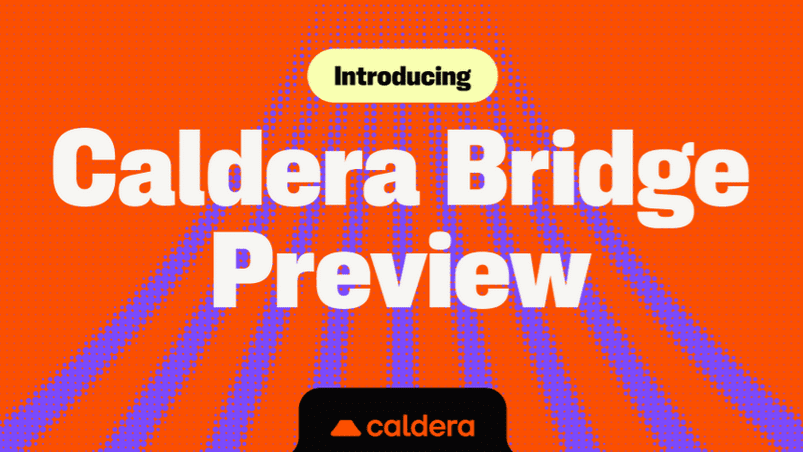In the development process of Web3, developers have always been the core force driving technological advancement and application innovation. However, traditional blockchain development environments place extremely high demands on developers: not only do they need to master complex cryptographic knowledge, but they also need to be familiar with various blockchain protocols and development frameworks. This high barrier to entry discourages many excellent traditional developers and limits the inflow of talent into the Web3 ecosystem. The emergence of Caldera is fundamentally changing this situation.

For developers, time is the most valuable resource. In traditional blockchain development models, just setting up a basic test environment can take several weeks, not to mention the deployment of a complete production environment. This long preparation period not only consumes developers' enthusiasm but also delays the realization of innovative ideas. Caldera compresses this process to a few minutes with its one-click deployment feature, allowing developers to invest more energy into developing truly valuable business logic.
More importantly, Caldera is building a truly inclusive developer ecosystem. Traditional Web2 developers do not need to relearn complex underlying blockchain technologies to leverage their existing skills to create blockchain applications. This ease of skill migration injects a lot of fresh talent into the Web3 field. When engineers familiar with traditional software development can easily transition to blockchain development, the innovation speed of the entire industry will grow exponentially.
From the perspective of developer experience, Caldera provides not just tools, but a complete development philosophy. Its no-code platform allows non-technical product managers and entrepreneurs to participate in the design and prototyping of blockchain applications. This cross-role collaboration model is almost unimaginable in traditional blockchain projects. When product designers can directly translate ideas into runnable blockchain prototypes, both the speed and quality of product iteration will see significant improvements.
Caldera's test network environment provides developers with a secure experimental space. Here, developers can try various innovative ideas without worrying about actual financial losses or security risks. This zero-cost trial-and-error environment greatly encourages developers' innovative spirit. Many ideas that were shelved in traditional development environments due to cost and risk considerations have found opportunities for realization on the Caldera platform.
The community-driven development model is another notable feature of the Caldera ecosystem. The project team actively listens to developers' feedback and suggestions, quickly integrating these opinions into product iterations. This open development strategy not only enhances the practicality of the product but also gives developers a genuine sense of participation and belonging. Discussions about Caldera in many developer forums and technical communities show a high degree of positivity and constructiveness.
From the perspective of technical architecture, Caldera's design philosophy reflects a deep understanding of developer needs. Its modular architecture allows developers to choose suitable components based on specific requirements, without being forced to accept redundant functions. This flexibility is extremely attractive to developers pursuing efficiency and simplicity. At the same time, the rich API interfaces and detailed documentation support enable developers to quickly get started and unleash their creativity.
It is worth noting the convenience that Caldera brings to developers in cross-chain development. Traditional cross-chain application development often requires developers to deeply understand the technical details and interaction protocols of different blockchains, which not only increases the learning cost but also raises the risk of errors. Caldera's Metalayer protocol encapsulates this complexity at the underlying level, allowing developers to handle multi-chain assets and interactions with a unified interface, greatly simplifying the difficulty of cross-chain application development.
From the perspective of career development, developers who master the Caldera platform are gaining more and more market opportunities. As more companies begin to adopt Caldera to deploy blockchain solutions, the demand for developers familiar with this platform is also growing rapidly. The scarcity of this skill creates a significant competitive advantage for early adopters. Many developers find that including Caldera-related project experience on their resumes can significantly enhance their competitiveness in the job market.
The richness of educational and training resources is also a highlight of the Caldera ecosystem. The project team provides a complete learning path from beginner to advanced levels, helping developers of different skill levels quickly master the platform's usage. This systematic educational support reduces the learning curve for developers and accelerates the growth of the community. Many programmers who were originally daunted by blockchain development have successfully transitioned into Web3 developers through Caldera's educational resources.
In terms of long-term development, Caldera is nurturing a brand new developer ecosystem. This ecosystem includes not only technical tools and platforms but also community culture, collaboration models, and value-sharing mechanisms. Developers who grow up in such an environment will have stronger innovative capabilities and broader technical horizons. They are not only users of the Caldera platform but also drivers and beneficiaries of the entire Web3 technology revolution.
Follow @Caldera Official to learn about the latest developer tools and resources, join #caldera the developer community to share experiences and insights, and explore $ERA the unlimited development possibilities within the ecosystem.

